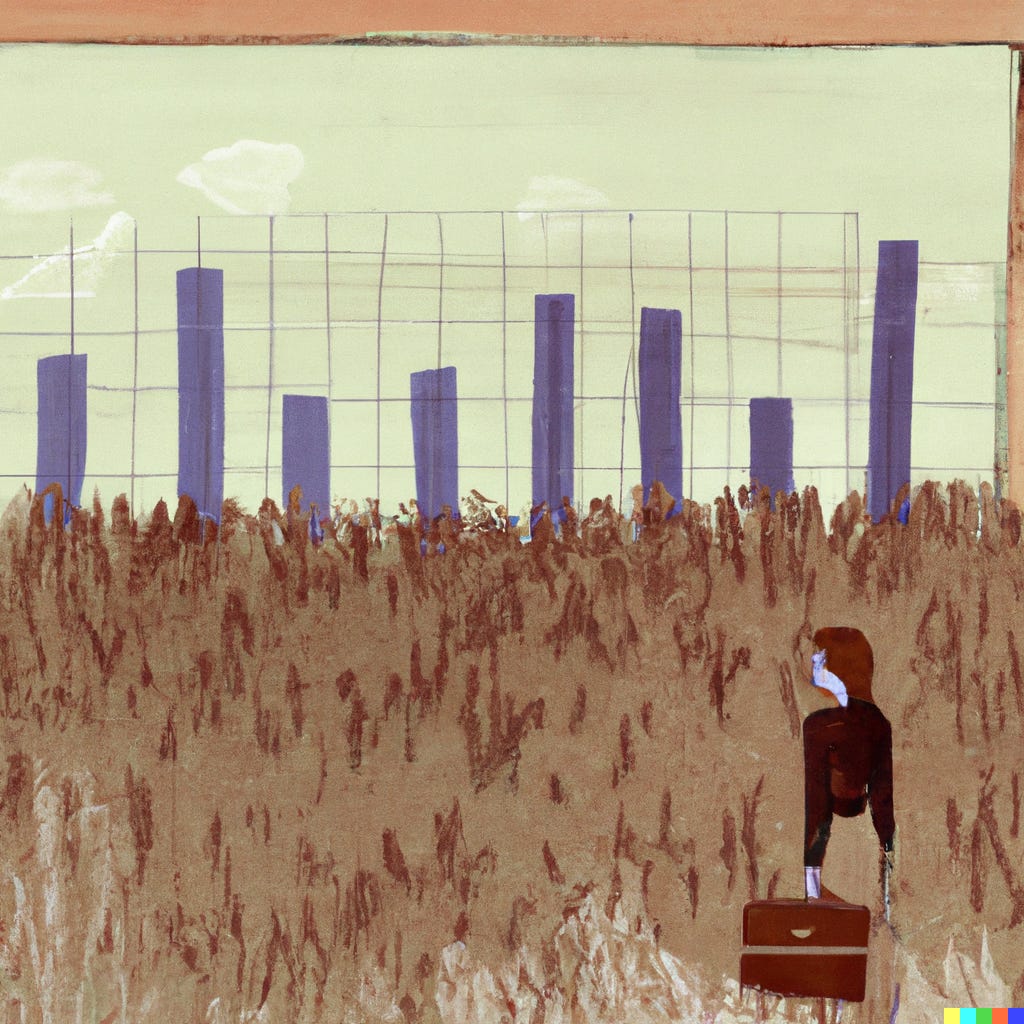When Data Joined My Writing Universe 12 Years Ago
How analytics transformed my approach to storytelling and audience connection
First day on the job — new state, new role — and the director hands me a stack of blogs he’d like me to review.
There are around 15 or 20, all de-identified, and he wants my assessment on which writers should stay and which should go.
I remember a queasy feeling in the pit of my stomach (I was 27 and hadn’t ever truly “fired” someone before). But mostly I was aflutter with excitement. It was 2012, and up until I arrived, the agency had only ever worked with content farms and one freelance writer to create blogs and ebooks for their B2C clients.
As I read through the stack, I knew quickly who wasn’t going to make the cut. I was fresh from several years in publishing and editorial production at a top global law firm, and now I was here. At a marketing agency in Colorado Springs and I was their very first content manager — a role many people weren’t even sure what to make of yet.
It felt like a dream job I had sketched out on paper: managing editor for digital content, building a team of writers, setting creative direction for clients … but not long after arriving, I knew things were going to be quite different from what I was used to. Within a few weeks, I was also inbound marketing certified and receiving ongoing training in a tool that was still up-and-coming at the time — HubSpot. Our agency was among the first Value Added Resellers, which gave us access to incredible training resources. Here, I began bridging the worlds of journalism and publishing with something novel: data.
Bridging the Gap Between Storytelling and Audience Insight
This was the first time I experienced publishing not in a vacuum of aesthetics and editing teams but in a lively, real-time connection with an audience (customers). Data wasn’t just numbers to me; it was a way of uncovering the intentions, questions and curiosities of the people we were trying to reach. I dove into the world of data analytics, from email sequencing to tracking behaviors that mattered in marketing. It might have felt intrusive to some, but I quickly saw it as a flashlight illuminating how people actually engage in a digital world.
I’d caught the “data itch.” I found myself toggling between the needs of our writers, audience research and the insights from our marketing dashboards. In that role, I balanced quality outputs with budgets, deadlines and the constant push to maximize resources. At the height of it, I managed about 90 blogs per month, alongside ebooks, email campaigns, website audits and more.
This immersion into content and data sparked a desire to try things on my own terms. I liked what I was learning from the data-driven side, but I also resonated with Ann Handley’s approach to authentic, human-centered writing (an approach that later became a cornerstone for me when I worked with her as an editorial advisor).
Transforming Essay Creation with Data-Driven Strategies
Data has a way of teaching something profound about people. These days I’m using it to find a bridge between the thoughtful work of creatives and entrepreneurs and the people they’re hoping to connect with. I’m using it to illuminate the work we’re doing here in The Editing Spectrum. In newsletters we’re working with a highly relational product, which means it’s also hard to pin down “why” some things resonate and when readers are truly ready to invest financially. But we can be diligent in learning about our readers — anecdotally in the comments of our posts and through the data that tells us something about them. With data, we can see more about our readers. A click becomes more than a click; it’s an indicator of interest. An email open, a sign of intrigue. A “forward” shows real value, and when someone shares their phone number, you’re building a trusted relationship. Data has so much more to tell us.
This month on The Editing Spectrum, I’m excited to start diving into the world of data with you. We’ll look at how anyone who’s writing a newsletter can use data to better understand their readers without losing their creative spirit. I launched this exploration just this past weekend.
On Saturday, I spent time with
and her members, unpacking the essentials of Substack’s data — like which metrics to prioritize, taking reliable data seriously (but holding it lightly) and how to learn about your subscribers by the standard columns you set to follow on your subscriber page. If you’re curious, I think it’s worth checking out the replay.During the month of November, we’ll be looking at what data really means for newsletter creators, exploring how you can use these insights to connect, inspire and engage with your readers in new and meaningful ways.
Whether data feels like confetti in your brain or you’re eager to learn more, I hope you’ll join the conversation. Let's discover together how data can enhance the magic of storytelling and reader connection.






Love how you empower us to find depth in our efforts on substack. TY Amanda!
It was eye-opening to attend your workshop with Sarah Fay on Saturday but I have to admit I am feeling daunted by all the ways I could analyze my newsletter data on Substack and fall down a rabbit hole of over-analysis and worry that could distract me from the main job of being a creator. I am sure you'll have good advice for avoiding that!